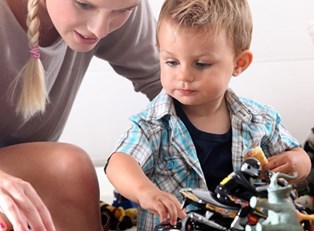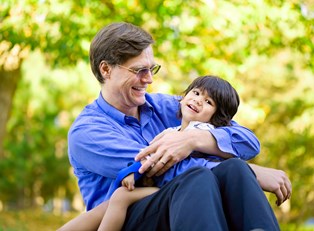You may be wondering whether your child has cerebral palsy (CP), a neurological condition that denotes irreversible brain damage affecting a person’s motor control and movements. According to the Centers for Disease Control and Prevention (CDC), cerebral palsy is usually diagnosed by age 2.
Because CP is not a disease but a result of neurological damage, symptoms usually do not progressively worsen, but they can vary by the type of CP a patient is experiencing. Symptoms also manifest differently from person to person. A patient’s symptoms might even change throughout his or her lifetime or within a single day. Below is a breakdown of signs and symptoms you might recognize in a child with cerebral palsy.
Overview
In general, CP results in a pendulum of two characteristic features: muscle weakness and muscle stiffness. The effects these traits have on the muscles can fall anywhere in between. For example, CP can affect just the legs or just the limbs on one side of the body. Additionally, it can cause rapid uncontrollable jerking or paralysis. The range of symptoms is broad.
While you are researching the signs and symptoms of cerebral palsy, you should keep in mind that a few conditions are highly correlated with this condition, such as autism spectrum disorder and seizures.
It is important to stay mindful of the following as you read about cerebral palsy:
- Brain damage does not necessarily mean that intellectual ability has been impacted.
- Language skills might also be normal.
- Many children without cerebral palsy also experience some of the listed signs and symptoms, so the presence of any of the following is not necessarily a guarantee that a child has CP.
- A hallmark sign of CP is a delay in achieving motor development milestones.
Signs of Cerebral Palsy
According to the National Institute for Neurological Disorders and Stroke, the following motor-skills-related warning signs are seen before age 2, which is the age by which most cases have already been diagnosed:
- Infancy to six months of age
Infants may have too much muscle tone, which makes them seem stiff when you pick them up, and when lifted, their legs may cross like scissors opening and closing, which is called scissoring.
Conversely, they may have too little muscle tone, which makes them seem limp or floppy, and they may fail to support their head, especially when being picked up.
- Six to 10 months of age
While these few months include many developmental milestones, babies with cerebral palsy may not exhibit the same signs of mobility as their peers. They may reach for objects with only one hand while the other is fisted. They may not bring the hands together or to the mouth as other babies do at this stage. They also may not roll over.
- 10 months of age and older
Your child may crawl, but only by favoring or leading off with one side while the other appears to be pulled along. He or she may not be able to pull up to standing positions while holding onto supports or support weight with the legs. He or she will find alternatives to crawling, such as scooting on his or her bottom or knees, and may not respond to his or her own name or recognize familiar faces.
Other signs and symptoms may include but are not limited to:
- excessive drooling
- language delays
- difficulty swallowing
- unusual processing of touch
- does not seem to interact with you
Early detection of cerebral palsy is extremely important. As a result, physicians strongly urge parents to keep well-child appointments without refusing or delaying recommended vaccinations.



